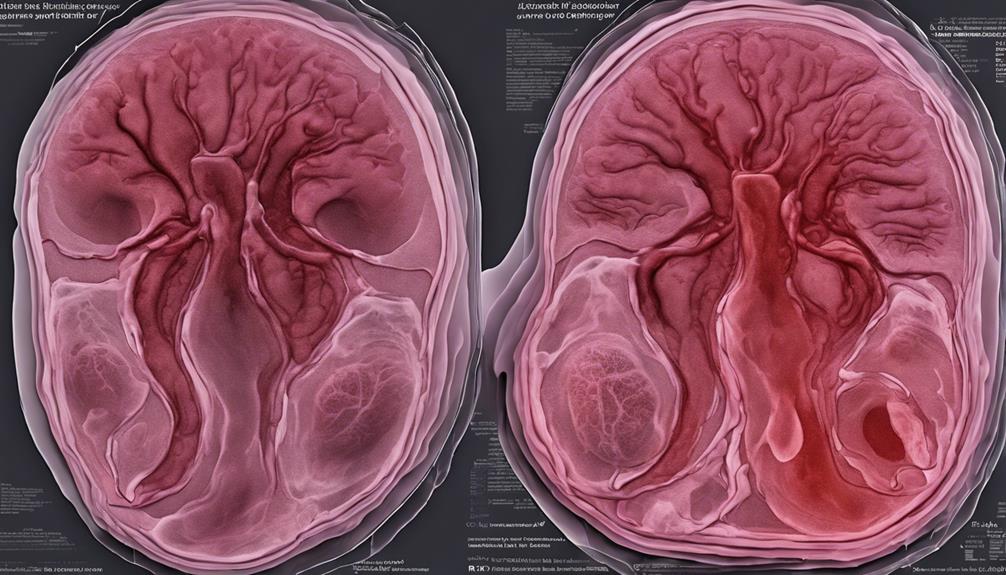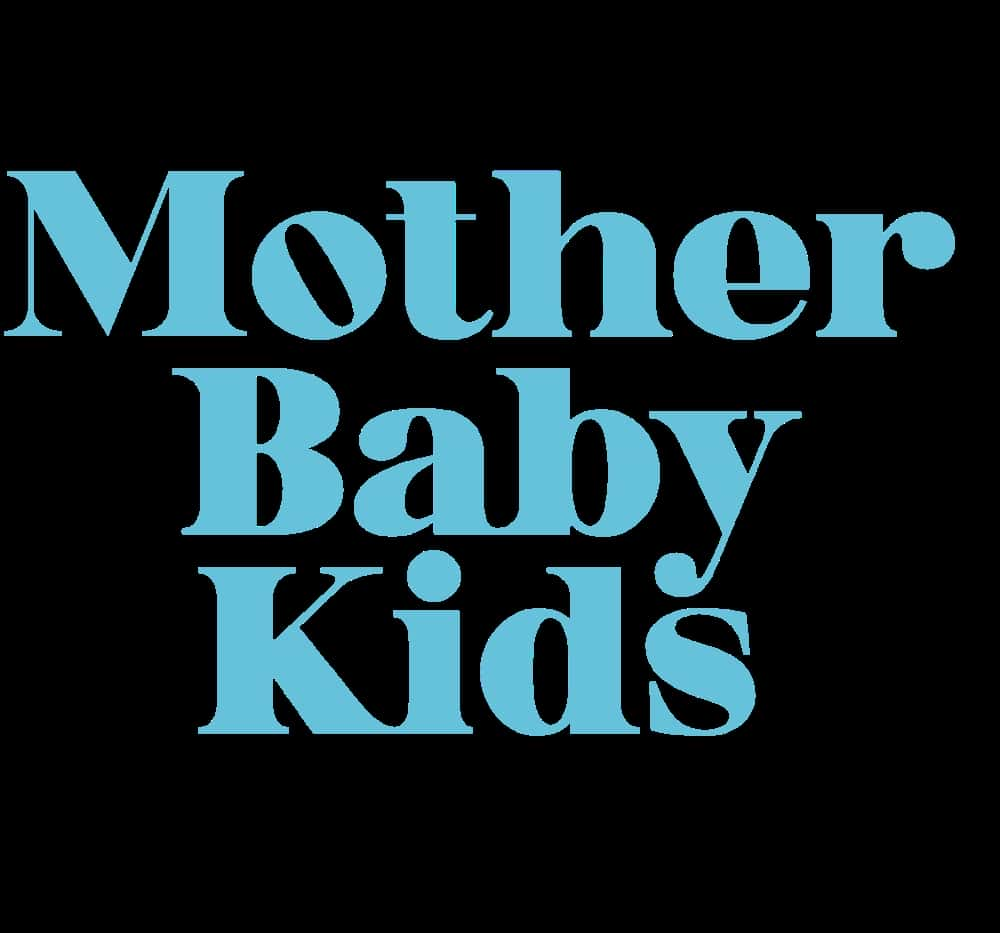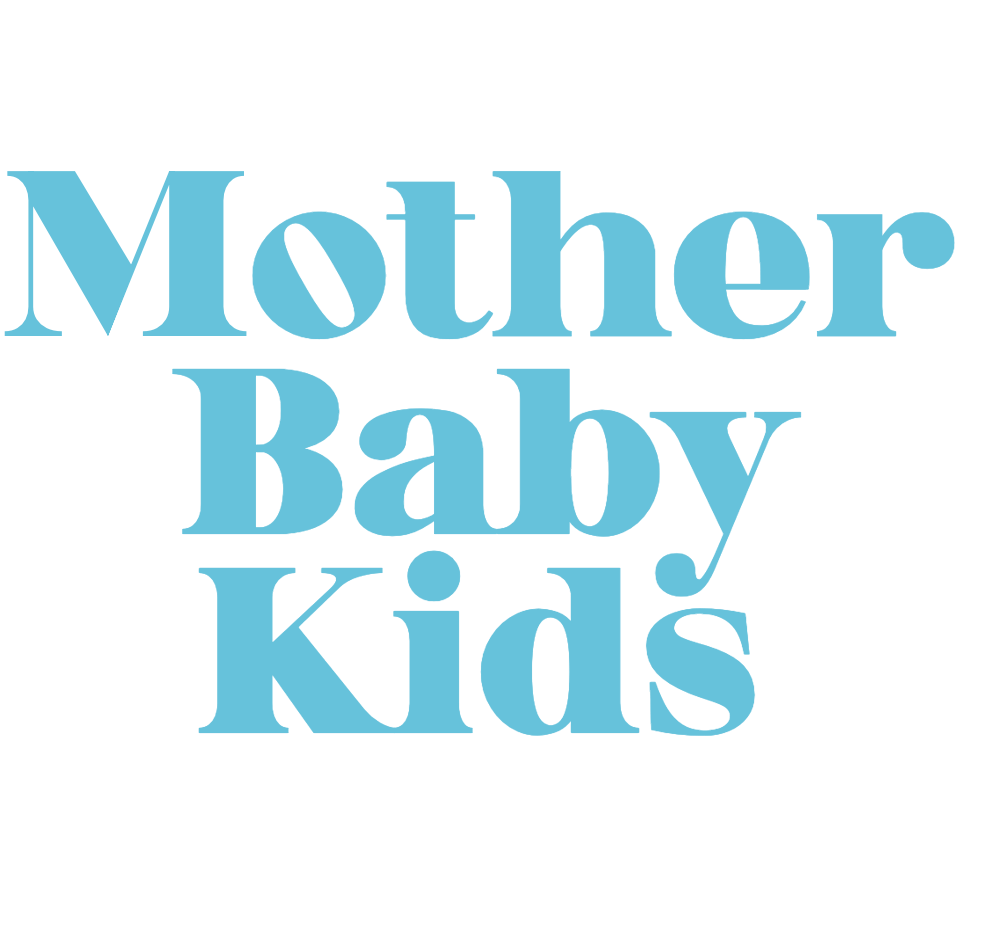Third Trimester
How to Safely Enjoy Eating Ice During Pregnancy Third Trimester
Indulge in the refreshing allure of ice during pregnancy's final months, but beware of hidden risks that could jeopardize your well-being.

As we enjoy the refreshing crunch of ice during the intense heat of the third trimester, it’s crucial to prioritize safety. But how can someone indulge in this cold delight without risking injury?
Let's explore practical tips and precautions to navigate this chilly craving with confidence and peace of mind. From dental concerns to moderation techniques, we'll uncover the secrets to enjoying ice during pregnancy's final stretch without compromise.
Join us as we uncover the keys to safe ice enjoyment and set off on a journey towards a cool and comfortable experience.
Key Takeaways
- Consult healthcare providers to address underlying causes of ice cravings.
- Manage cravings by including iron-rich foods in your diet.
- Be mindful of dental health risks associated with excessive ice consumption.
- Prioritize maternal and fetal well-being by seeking professional guidance.
Safety Precautions for Eating Ice
When consuming ice during the third trimester of pregnancy, it's important to observe safety precautions to guarantee the well-being of both the mother and the baby. Chewing ice can be a common craving for pregnant women, sometimes linked to iron deficiency anemia. While it may seem harmless, excessive ice consumption can have adverse effects.
To make sure safety, it's critical to be mindful of the frequency and quantity of ice chewing. Opting for crushed ice instead of larger cubes can reduce the risk of enamel damage or chipping, making it gentler on teeth. If ice cravings feel abnormal or persist for a prolonged period, seeking medical advice is essential for both maternal and fetal health.
Homemade crushed ice using a sealable bag and a heavy object can provide a safe and convenient option for satisfying cravings while minimizing potential risks. By being proactive and informed about the safety measures surrounding ice consumption during pregnancy, you can promote a healthier outcome for you and your baby.
Hydration Tips for Pregnant Women

Staying well-hydrated is essential for pregnant women, especially during the third trimester, as it supports both maternal health and fetal development. Pregnant women should aim to drink at least 8-10 cups of water daily to maintain perfect hydration levels. Hydrating with water-rich foods like fruits and vegetables can also help contribute to overall fluid intake. It's important to avoid sugary beverages and caffeinated drinks, as they can lead to dehydration, which may harm both the mother and the baby.
Monitoring urine color is a simple way to gauge hydration status; aiming for pale yellow to clear urine is a good indicator of adequate hydration. If experiencing signs of dehydration such as dark urine, dizziness, or dry mouth, it's important to consult with a healthcare provider promptly. Adequate hydration not only helps prevent dehydration but also reduces the likelihood of complications like pica or iron deficiency, ensuring a safe and healthy pregnancy for both the mother and the baby.
Managing Ice Cravings in Pregnancy
Monitoring and addressing ice cravings during pregnancy is essential for ensuring maternal and fetal well-being. It's important to understand the underlying issues that may contribute to these cravings and take steps to manage them effectively.
Here are some strategies to help you navigate through this period:
- Consult with a healthcare provider: Seeking medical advice can provide valuable insights into the potential causes of your ice cravings, such as iron deficiency or pica symptoms.
- Incorporate iron-rich foods: Consuming foods high in iron can help address deficiencies that may be triggering your cravings and support your overall health during pregnancy.
- Be mindful of dental issues: Chewing on ice frequently can have adverse effects on your dental health, so it's important to be aware of any potential dental concerns that may arise.
- Seek professional guidance: Working closely with healthcare professionals can help you manage your cravings in a way that minimizes health risks and ensures a safe pregnancy for you and your baby. Remember, your well-being is paramount, so don't hesitate to reach out for support.
Potential Risks of Eating Ice

Consuming excessive amounts of ice during pregnancy can pose potential risks to both maternal dental health and overall well-being. As much as we enjoy the invigorating crunch of ice, it is important to be aware of the possible consequences. Here are some key risks associated with indulging in too much ice during pregnancy:
| Potential Risks | Effects |
|---|---|
| Dental issues | Damage to tooth enamel |
| Choking hazards | Increased risk, especially with large ice pieces |
| Electrolyte imbalances | Potential seizures from imbalances |
| Iron deficiency | Addressing potential deficiency is vital during pregnancy |
| Healthcare provider guidance | Consultation for monitoring ice intake |
While it's natural to crave ice during pregnancy, monitoring your ice intake can help you strike a balance between satisfying those cravings and safeguarding your health. Don't hesitate to reach out to your healthcare provider for guidance on managing your ice cravings and ensuring a healthy pregnancy journey.
Healthy Alternatives to Munching Ice
To explore healthier options that can satisfy your cravings and support your well-being during pregnancy, consider trying these invigorating alternatives to munching ice:
- Freeze fruit juice into ice pops for a flavorful and hydrating alternative to plain ice.
- Opt for chilled water flavored with citrus slices or herbs like mint to satisfy the need for a rejuvenating drink.
- Experiment with frozen yogurt or smoothie popsicles to enjoy a cool treat while incorporating nutrients into your diet.
- Try munching on chilled cucumber slices or frozen grapes for a crunchy and hydrating snack that can help curb ice cravings.
These chilled snacks not only provide hydration and coolness but also offer nutritional value, unlike plain ice. By incorporating these icy beverages and cool treats into your diet, you can find satisfying alternatives to munching ice cubes while ensuring you stay hydrated and support your well-being during pregnancy.
Frequently Asked Questions
Why Do I Crave Ice Cubes in My Third Trimester?
Understanding ice cravings in the third trimester might be due to iron deficiency anemia or a way to cool down. Addressing these underlying causes is crucial for a healthier pregnancy journey.
How Do I Stop Craving Ice?
Craving ice is common and may indicate underlying issues. Address causes like nutrient deficiencies and seek medical advice if cravings persist. Stay hydrated with water or flavored ice to manage cravings. Develop a safe plan with your healthcare provider.
Why Does Low Iron Make You Crave Ice?
When iron levels are low, the body craves ice as a response to potential anemia. This craving, known as 'pagophagia,' indicates a need for more iron for better blood oxygen transport. Addressing these cravings through proper nutrition is crucial.
Does Eating Ice Help With Nausea During Pregnancy?
Eating ice can help relieve nausea during pregnancy by providing a cooling sensation and hydration. It's a simple way to manage symptoms and stay hydrated. Ice consumption might alleviate queasiness and soothe an upset stomach.
Conclusion
To sum up, by following safety precautions, staying hydrated, managing cravings, and being aware of potential risks, pregnant women can safely enjoy eating ice during the third trimester. Remember to opt for crushed ice, monitor consumption, and seek medical advice if needed.
Stay informed, stay safe, and enjoy your ice in a way that nourishes both you and your baby. Stay cool, stay hydrated, and stay healthy throughout your pregnancy journey.
Nancy combines her love for writing with a deep understanding of the diverse dynamics of family life. As a parent, she brings personal experience and empathy to her work, covering topics from early childhood to the teenage years. Nancy’s work is driven by the belief that every family’s story is unique, and sharing these stories can inspire and support others on their parenting journey.
Third Trimester
10 Ways to Ease Rib Pain in the Third Trimester
Hoping to find relief from rib pain in the third trimester? Explore innovative strategies beyond the basics in this article.

As expectant parents nearing the end of pregnancy, we are well aware of the discomfort that comes with rib pain. Try exploring simple yet effective methods to alleviate this discomfort and enhance your well-being during this critical time.
By implementing strategies like wearing loose clothing and utilizing supportive pillows, you can experience a significant reduction in rib pain.
But, what other innovative and practical solutions could be the key to easing this discomfort in the third trimester?
Key Takeaways
- Use warm compress and gentle stretching to relax muscles and enhance breathing.
- Maintain proper posture and consider using a maternity belt for support.
- Opt for pregnancy-safe pain relief methods and explore acupuncture for discomfort.
- Consult a healthcare provider for personalized advice and consider water therapy for rib pain relief.
Warm Compress
Wondering how to ease rib pain in the third trimester? One effective method is using a warm compress. When those rib muscles ache during pregnancy, a warm compress can work wonders.
The heat gently seeps into the tissues, relaxing tightness and reducing discomfort. It's like a soothing hug for your ribs, bringing relief without any worries about harm to you or the baby. By increasing blood flow to the area, the warm compress helps calm inflammation and kickstarts the healing process.
Simply apply it for 15-20 minutes a few times a day, and you'll feel the tension melt away. As your body adjusts to accommodate your growing baby, the warm compress becomes your ally, making breathing easier and movements more comfortable.
Embrace the warmth, let it seep into your ribs, and experience the gentle alleviation of that persistent rib pain.
Proper Posture

Maintaining proper posture during the third trimester is essential for creating space in the torso and reducing pressure on the ribs. Good posture not only supports the spine but also helps in aligning the body correctly, preventing unnecessary strain on the rib cage.
Here are some tips to help you improve your posture and alleviate rib pain during this critical stage:
- Avoid Slouching: Slouching or hunching over can exacerbate rib pain, so try to sit and stand up straight to relieve pressure on your ribs.
- Use Pillows for Support: Adding extra pillows while sitting or lying down can provide the necessary support to maintain proper posture and reduce discomfort in the ribs.
- Practice Mindful Posture: Being mindful of your posture throughout the day can have a significant impact on your rib pain. Take breaks to stretch and adjust your position regularly to avoid putting too much strain on your torso.
Gentle Stretching
To alleviate rib pain in the third trimester, incorporating gentle stretching exercises into our routine can help improve flexibility and reduce muscle tension effectively. During this stage of pregnancy, rib pain can be a common source of discomfort due to the expanding uterus putting pressure on the ribs and surrounding muscles.
By engaging in gentle stretching, we can target specific areas of discomfort around the ribs, back, and shoulders, providing much-needed relief. These stretches not only help in alleviating immediate discomfort but also contribute to better circulation in the rib area, promoting overall relief.
Regular stretching sessions are essential for maintaining mobility and preventing stiffness in the rib cage as our bodies undergo changes. It's vital to consult with a prenatal yoga instructor or healthcare provider to learn safe and effective stretching techniques tailored to our needs during the third trimester.
Supportive Pillows

Using supportive pillows is a practical way to alleviate rib pain during the third trimester of pregnancy, providing extra cushioning and support to enhance comfort and reduce pressure on the ribs. Supportive pillows can make a significant difference in managing discomfort and promoting better sleep quality. Here are some ways these pillows can help:
- Strategic Placement: Placing pillows strategically around your body can help create a more comfortable sleeping position, relieving pressure on the ribs.
- Proper Alignment: Pregnancy pillows designed to support the belly and back can help maintain proper alignment, reducing strain on the ribs.
- Adjustable Support: Using multiple pillows allows you to adjust your sleeping position easily, finding the right support to alleviate rib pain and discomfort throughout the night.
Investing in supportive pillows tailored for pregnancy can be a game-changer in your quest for relief from rib pain during this critical stage of your journey.
Pregnancy-Safe Pain Relief
When seeking relief from rib pain during pregnancy, it's important to prioritize safe options such as acetaminophen (Tylenol) and alternative therapies like heat therapy and gentle stretching exercises. Acetaminophen is generally considered essential for managing pain in pregnancy, but it's vital to avoid nonsteroidal anti-inflammatory drugs (NSAIDs) like ibuprofen, especially in the third trimester. Before taking any medication for rib pain during pregnancy, consulting with your healthcare provider is necessary to guarantee safety for you and your baby.
In addition to medication, heat therapy, warm baths, and gentle stretching exercises can provide relief for rib pain in the third trimester. These methods are effective and safe ways to alleviate discomfort without posing risks to your pregnancy. Consider incorporating pregnancy support belts into your routine to help support your growing belly and relieve pressure on your ribs. By combining these pregnancy-safe pain relief methods, you can find comfort and ease the rib pain you may be experiencing during this stage of pregnancy.
Prenatal Massage

Prenatal massage offers a range of benefits, from easing muscle tension to promoting relaxation. During these sessions, specific techniques can target areas like the hips and gluteal muscles to help alleviate rib discomfort.
Incorporating regular prenatal massages into your routine may also create more space for your baby to settle into a more comfortable position, potentially reducing rib pain.
Benefits of Massage
Massage therapy during pregnancy can be incredibly beneficial for easing rib pain in the third trimester. Prenatal massage offers a range of advantages for mothers-to-be:
- Relieving Strained Muscles: Prenatal massage can help reduce discomfort in the hips and gluteal area, which in turn can alleviate rib pain.
- Creating Space for the Baby: By aiding the baby to drop into a good position, prenatal massage may provide relief from rib pain in the third trimester.
- Enhancing Overall Well-being: Through relaxation and pain relief, prenatal massage contributes to an improved sense of well-being during pregnancy.
These benefits highlight the importance of considering prenatal massage as a valuable option for managing rib pain in the later stages of pregnancy.
Techniques for Comfort
In our practice, we often utilize specific techniques to provide comfort and relief for expecting mothers through specialized massages. Prenatal massage is a wonderful way to alleviate rib pain in pregnant women during the third trimester. By targeting strained muscles and promoting relaxation, these massages can effectively reduce discomfort. Focusing on areas like the hips and gluteal muscles can offer additional relief for rib pain. In addition, massage therapy can create space for the baby to move into a better position, easing pressure on the ribs. Regular prenatal massages, especially after 36 weeks, can be particularly beneficial as the baby's positioning changes. Embrace the soothing benefits of prenatal massage for a more comfortable pregnancy journey.
| Techniques for Comfort |
|---|
| Targeting strained muscles |
| Promoting relaxation |
| Focusing on hips and gluteal muscles |
| Creating space for the baby |
| Regular massages after 36 weeks |
Acupuncture

When seeking relief from rib pain in the third trimester of pregnancy, acupuncture offers a safe and effective option to explore. Acupuncture involves the insertion of thin needles into specific points on the body, targeting energy pathways to alleviate discomfort. Studies suggest that this ancient practice can effectively reduce pregnancy-related discomfort, including rib pain, by promoting relaxation and providing pain relief.
Here are three key points to take into account:
- Acupuncture is considered safe for pregnant women when administered by a qualified practitioner experienced in prenatal care.
- Discussing the use of acupuncture for rib pain in the third trimester with a healthcare provider is crucial to make certain it aligns with individual needs and health conditions.
- Acupuncture sessions may not only help in relieving rib pain but also contribute to overall well-being by enhancing the body's natural healing processes.
Exploring acupuncture as a way to ease rib pain during the third trimester can offer pregnant individuals a holistic and safe approach to finding comfort and relief.
Maternity Belt

Wearing a maternity belt during the final trimester can make a significant difference in easing rib pain.
It provides essential support to the abdomen and lower back, helping to alleviate discomfort and promote better posture.
Proper adjustment and positioning of the belt are key to ensuring maximum relief and comfort throughout this pivotal stage of pregnancy.
Belt for Support
Support your growing belly and ease rib pain in the third trimester with the help of a maternity belt. Maternity belts offer essential support to your abdomen and lower back, effectively relieving pressure on your ribs. Here are three key benefits of using a maternity belt:
- Weight Redistribution: By redistributing the weight of your baby bump, the belt reduces strain on your rib cage and encourages better posture.
- Adjustable Comfort: Maternity belts are adjustable to accommodate your expanding belly, ensuring ideal comfort and support throughout your pregnancy.
- Pain Alleviation: Wearing a maternity belt can alleviate discomfort from rib pain, making daily activities more manageable as you progress through the third trimester.
Experience the relief and support you deserve with a maternity belt tailored to your needs.
Proper Adjustment Tips
To guarantee ideal comfort and support, proper adjustment of a maternity belt is essential, especially during the third trimester of pregnancy. When adjusting your maternity belt, position it low on your hips for best lower back support. It should feel snug but not too tight, allowing for comfortable movement throughout the day. By adjusting the maternity belt as needed, you can alleviate rib pain, pelvic discomfort, and other pregnancy-related aches. Here is a table to guide you in properly adjusting your maternity belt:
| Adjustment Tips | Benefits |
|---|---|
| Position low on hips | Best lower back support |
| Snug fit | Comfortable movement |
| Adjust throughout day | Alleviate rib and pelvic pain |
Water Therapy

Water therapy during the third trimester can be incredibly beneficial for easing rib pain and promoting overall comfort and well-being. Engaging in gentle exercises in a pool or warm water can help alleviate discomfort and improve your well-being in various ways:
- Buoyancy Support: The buoyancy of water reduces pressure on your ribs and joints, making movements easier and less painful.
- Circulation Improvement: Water therapy can enhance circulation, which may help reduce swelling and provide relief from the discomfort associated with rib pain.
- Muscle Strengthening: Activities like swimming or water aerobics not only strengthen muscles but also improve flexibility, promoting relaxation during the third trimester.
Embracing water therapy not only offers physical benefits but can also provide a soothing and calming experience during this challenging time. Consult with your healthcare provider before starting any water therapy to ensure it's safe and suitable for your specific pregnancy needs.
Consult Healthcare Provider

If you're experiencing persistent or worsening rib pain in the third trimester, seeking guidance from your healthcare provider is important for personalized advice and safe management. When discussing any rib pain with your healthcare provider, they can help rule out any underlying complications and recommend safe and effective methods to ease your discomfort during this critical stage of your pregnancy.
Your healthcare provider plays a crucial role in ensuring that you receive appropriate care tailored to your specific needs, so don't hesitate to reach out to them. Regular communication with your healthcare provider is key to monitoring and addressing rib pain in the third trimester, as they can provide the necessary support and guidance throughout this journey.
Trust in your healthcare provider's expertise to manage your rib pain effectively and prioritize your well-being and comfort during this transformative time.
Frequently Asked Questions
How Can I Stop My Ribs From Hurting in My Third Trimester?
I comprehend how uncomfortable rib pain can be in the third trimester. Here are some helpful tips to provide relief: practice good posture, use hot/cold compresses, wear loose clothing, use supportive pillows, and enjoy regular massages.
What Helps Broken Rib Pain During Pregnancy?
When broken rib pain arises during pregnancy, seeking healthcare guidance is essential. Posture adjustments, supportive pillows for sleep, heat packs, warm baths, and loose clothing can ease discomfort. Consult your provider for safe pain management options.
How Can I Sleep With Rib Pain in Third Trimester?
When dealing with rib pain in the third trimester, finding a comfortable sleeping position is essential. We recommend using extra pillows for support, sleeping on your side with a pillow between your knees, and trying different positions to alleviate discomfort.
How Do I Get My Baby to Stop Hurting His Ribs?
Let's find comfort in gentle movements, warmth, deep breathing, and support belts. Consulting with our healthcare provider guarantees personalized guidance. Together, we'll navigate this rib pain caused by our baby's movements in the third trimester.
Conclusion
To summarize, when dealing with rib pain in the third trimester, it's important to remember that relief is possible. By incorporating simple strategies like using warm compresses, maintaining good posture, and seeking support from healthcare providers, expecting mothers can find comfort during this challenging time.
As the saying goes, 'where there's a will, there's a way.' Stay strong, mama, and don't hesitate to seek help when needed. You've got this!
Nancy combines her love for writing with a deep understanding of the diverse dynamics of family life. As a parent, she brings personal experience and empathy to her work, covering topics from early childhood to the teenage years. Nancy’s work is driven by the belief that every family’s story is unique, and sharing these stories can inspire and support others on their parenting journey.
Third Trimester
Understanding the Causes of High Fetal Heart Rate in Third Trimester
Tackle the enigma of high fetal heart rate in the third trimester to unravel crucial insights for optimal prenatal care.

When analyzing the increased fetal heart rate in the third trimester, it is essential to understand the various factors that contribute to this important aspect of prenatal care. Understanding these intricacies is crucial for ensuring the best outcomes for both the mother and the baby.
From subtle physiological changes to more overt indicators, the causes of elevated fetal heart rate can offer insights into the well-being of the developing fetus. By unraveling these mysteries, healthcare providers can implement tailored interventions that may greatly impact the pregnancy journey.
Key Takeaways
- Maternal conditions like hyperthyroidism and hyperglycemia contribute to high fetal heart rate.
- Immediate medical attention is necessary due to risks like preterm labor and fetal distress.
- Diagnostic tests such as non-stress tests and Doppler ultrasounds aid in identification.
- Management strategies involve multidisciplinary approaches for optimal fetal well-being.
High Fetal Heart Rate Overview
In the domain of prenatal care, understanding the nuances of high fetal heart rate in the third trimester is paramount for ensuring the well-being of both mother and baby. High fetal heart rate, also known as fetal tachycardia, is characterized by a consistent rate exceeding 160 beats per minute. Diagnostic tests such as non-stress tests (NST) and Doppler ultrasound play a critical role in monitoring this condition.
Maternal conditions like hyperthyroidism, hyperglycemia, and dehydration can contribute to elevated fetal heart rate, emphasizing the importance of thorough maternal health assessment. The effects of high fetal heart rate extend beyond numerical values, increasing the risk of preterm labor and fetal distress.
Management strategies for addressing high fetal heart rate may involve a multidisciplinary approach. This could include managing underlying maternal conditions, close fetal monitoring, and, in severe cases, consideration of emergency delivery to prevent adverse outcomes for both the mother and the baby. Vigilance in detecting and managing high fetal heart rate is key to ensuring a safe and healthy pregnancy journey.
Common Causes in Third Trimester

Exploring the factors that precipitate high fetal heart rate in the third trimester sheds light on the common causes impacting maternal and fetal well-being. Here are four common causes in the third trimester:
- Maternal Conditions: Maternal fever, infections, dehydration, anxiety, and certain medications can lead to elevated fetal heart rate. Conditions like hyperthyroidism, hyperglycemia due to diabetes, and fetal anemia also contribute to this issue.
- Risks of Preterm Labor: High fetal heart rate in the third trimester increases the risk of preterm labor, fetal hypoxia, reduced heart rate variability, and fetal acidosis, affecting fetal growth and development.
- Impact on Fetal Well-being: Fetal distress can cause an increase in heart rate, necessitating immediate medical attention to prevent complications.
- Diagnostic Tests: Utilizing diagnostic tests such as non-stress tests, biophysical profiles, Doppler ultrasounds, fetal echocardiography, and umbilical artery blood flow assessments aids in identifying the causes of high fetal heart rate in the third trimester.
Impact on Baby and Mother
What specific impacts does high fetal heart rate in the third trimester have on both the baby and the mother?
High fetal heart rate in the third trimester can pose risks for both the baby and the mother. For the baby, an elevated heart rate can indicate potential issues such as preterm labor and hypoxia, which may affect fetal growth and development. Maternal conditions like hyperthyroidism and hyperglycemia linked to diabetes can contribute to this high fetal heart rate, further impacting the baby. Additionally, factors such as maternal dehydration, anxiety, infections, and certain medications can also play a role in increasing the fetal heart rate.
For the mother, the presence of a high fetal heart rate may necessitate immediate medical attention to address underlying maternal and fetal health concerns effectively. Monitoring and managing high fetal heart rate in the third trimester is essential to guarantee the well-being of both the baby and the mother.
Monitoring and Medical Interventions
High fetal heart rate in the third trimester necessitates close monitoring through diagnostic tests such as non-stress tests, biophysical profiles, Doppler ultrasounds, fetal echocardiography, and umbilical artery blood flow assessments. When dealing with high fetal heart rate, interventions are vital to guarantee the well-being of both the baby and the mother.
Here are some key points to ponder:
- Non-Stress Tests: These evaluate the baby's heart rate in response to its movements, providing valuable insights into fetal well-being.
- Biophysical Profiles: This test combines ultrasound and fetal heart rate monitoring to assess various aspects of fetal health, including amniotic fluid levels and fetal movements.
- Doppler Ultrasounds: They help in evaluating blood flow in the umbilical cord, placenta, and fetal brain, aiding in the detection of any abnormalities.
- Fetal Echocardiography: This specialized ultrasound assesses the baby's heart structure and function, vital in cases of suspected cardiac issues.
Through these diagnostic tests and timely medical interventions, healthcare providers can effectively manage high fetal heart rate, address maternal conditions, and take preventive measures to promote a healthy pregnancy outcome.
Postnatal Care and Considerations
Upon birth, infants with fetal tachycardia undergo thorough evaluation by a medical team to assess their heart rhythm. Postnatal care for these infants involves continuous monitoring and limited evaluation in the hospital setting to guarantee their well-being.
In cases where abnormal heart rates persist, additional therapy may be necessary to regulate the heart rhythm effectively. Treatment options postnatally may include interventions such as electrical cardioversion or medication to manage the infant's heart rate. It's important for medical professionals to closely follow up on these infants to track their progress and adjust treatment plans accordingly.
Fortunately, with proper postnatal care and timely interventions, most infants with fetal tachycardia can discontinue heart rhythm medications by the age of one, indicating successful management of the condition. The collaborative efforts of medical teams in providing inclusive postnatal care play a significant role in ensuring the health and development of these infants with abnormal heart rates.
Frequently Asked Questions
What Is an Abnormal Fetal Heart Rate in the Third Trimester?
An abnormal fetal heart rate in the third trimester is a consistent rate exceeding 160 beats per minute. Normal rates range between 110-160 bpm. Monitoring, tests like NST, BPP, Doppler ultrasound, and consults with specialists are essential for evaluation.
What Does It Mean When Your Unborn Baby Has a High Heart Rate?
When our unborn baby has a high heart rate, it indicates potential issues like maternal fever, fetal distress, or dehydration. Monitoring through tests like non-stress tests and Doppler ultrasounds helps understand and manage any underlying conditions promptly.
Can Maternal Stress Cause High Fetal Heart Rate?
Yes, maternal stress can cause high fetal heart rate in the third trimester. Stress triggers hormone release impacting the baby's heart rate. Managing stress through relaxation techniques like deep breathing is important for maintaining best fetal heart rate.
How Do I Know if My Baby Is in Distress in 3rd Trimester?
In the third trimester, signs of fetal distress like decreased movements or persistently high heart rate above 160 bpm may indicate a problem. Contact your healthcare provider promptly for evaluation and necessary interventions to guarantee your baby's well-being.
Conclusion
To sum up, understanding the causes of high fetal heart rate in the third trimester is essential for ensuring a healthy pregnancy. By addressing underlying factors such as maternal fever, stress, and dehydration, we can promote the well-being of both the baby and the mother.
Remember, 'knowledge is power' when it comes to managing high fetal heart rate and ensuring a safe delivery for all involved. Stay informed, stay vigilant, and prioritize the health of both mother and baby.
Nancy combines her love for writing with a deep understanding of the diverse dynamics of family life. As a parent, she brings personal experience and empathy to her work, covering topics from early childhood to the teenage years. Nancy’s work is driven by the belief that every family’s story is unique, and sharing these stories can inspire and support others on their parenting journey.
Third Trimester
What Can a Third Trimester Ultrasound Reveal?
Take a peek into the third trimester ultrasound findings to uncover crucial insights about your baby's well-being and your pregnancy's progress.

The saying “knowledge is power” is particularly relevant when it comes to a third trimester ultrasound, as the information obtained can have a significant impact.
From the baby's growth and position to the placental health and potential complications, this scan offers a window into the well-being of both the baby and the pregnancy.
The information revealed during this ultrasound can be important for making informed decisions and ensuring the best possible outcome for the pregnancy.
So, what exactly can this ultrasound disclose in the important third trimester?
Key Takeaways
- Assess fetal growth and well-being for a healthy delivery.
- Determine baby's position to plan for a safe birth.
- Detect complications like abnormalities or placental issues.
- Evaluate placenta health and amniotic fluid levels for optimal fetal development.
Growth and Development Assessment
Evaluating the growth and development of the fetus in the third trimester through ultrasound enables tracking of length and weight measurements to monitor progress effectively. It's a time of anticipation and wonder, as we witness the miracle of life unfolding before our eyes.
The ultrasound reveals intricate details about fetal growth, including the estimated fetal weight, ensuring that our little one is thriving inside the womb. We can observe the levels of amniotic fluid, a crucial indicator of the baby's environment, and check for any signs of fetal abnormalities that may require attention.
Feeling the joy of fetal movement and seeing the umbilical cord blood flow in real-time fills us with gratitude and reassurance. Every beat of the heart and stretch of tiny limbs is a proof to the beauty of creation.
Through these moments of connection, we bond with our baby even before they enter the world, cherishing each milestone along this miraculous journey.
Baby's Position and Presentation

In the third trimester ultrasound, we can determine the baby's position in the uterus, providing essential information for planning the delivery process. This examination helps us identify the fetal position, whether the baby is in a cephalic (head down), breech, or transverse presentation.
Understanding the baby's position is critical as it allows healthcare providers to assess the feasibility of a vaginal delivery. In cases where there's abnormal positioning detected, such as breech or transverse presentations, interventions during birth may be necessary to guarantee a safe delivery for both the baby and the mother.
The information gathered from the ultrasound not only aids in determining the best course of action for delivery but also guides medical decisions to address any challenges that may arise during the birthing process. Being aware of the baby's position empowers us to make informed decisions and tailor the delivery plan to guarantee a smooth and safe birth experience.
Detection of Complications
Understanding the baby's position in the uterus during the third trimester ultrasound enables us to detect various complications that may affect the health of both the mother and the baby. This critical scan helps identify fetal abnormalities, placental issues, and conditions like fetal growth restriction, oligohydramnios, and placenta previa.
By evaluating amniotic fluid levels and looking for signs of cord compression, we can catch potential problems early on. The ultrasound also aids in recognizing fetal distress and the risk of macrosomia, a condition where the baby is larger than average. Additionally, it allows monitoring for concerns such as preeclampsia, fetal anomalies, and umbilical cord abnormalities.
Detecting these complications through the third trimester ultrasound is essential as it provides valuable insights that can impact the delivery process and the well-being of both the mother and the baby.
Placenta Health Evaluation

Evaluating the health of the placenta in the third trimester ultrasound is pivotal for ensuring the best nutrient and oxygen supply to the fetus. During this ultrasound, we focus on appraising the placenta's position, checking for any abnormalities like placenta previa, which could impact delivery.
Monitoring the placental blood flow using Doppler ultrasound helps us guarantee that the baby is receiving sufficient oxygen and nutrients for the best development. By appraising the placental health, we can also detect any blood clots that might hinder fetal well-being and growth.
This detailed examination of the placenta's health and function is critical in guaranteeing that it can adequately support the baby until birth. It allows us to intervene early if any issues are detected, ensuring the well-being of both the mother and the baby.
The third trimester ultrasound plays a significant role in safeguarding the health and development of the fetus by closely monitoring the placenta's condition.
Amniotic Fluid Levels Analysis
As we shift our focus to the amniotic fluid levels analysis in the third trimester ultrasound, our attention now turns to evaluating the environment surrounding the fetus in the womb. Monitoring the levels of amniotic fluid, whether it be polyhydramnios (excessive fluid) or oligohydramnios (low fluid), is essential for evaluating fetal well-being and development. Changes in these levels can indicate potential issues such as fetal growth problems or placental dysfunction, impacting the overall health and viability of the pregnancy. By accurately evaluating the amniotic fluid levels, healthcare providers can gather essential insights into the baby's environment and make informed decisions regarding the next steps in care.
| Amniotic Fluid Levels Analysis | |
|---|---|
| Polyhydramnios | Excessive amniotic fluid |
| Oligohydramnios | Low levels of amniotic fluid |
| Fetal well-being | Evaluation of baby's health |
| Fetal growth problems | Issues with baby's development |
| Pregnancy viability | Determining health of the pregnancy |
Frequently Asked Questions
What Are the Abnormalities in the Third Trimester Ultrasound?
We can identify abnormalities like fetal growth issues, amniotic fluid imbalances, abnormal fetal presentation, and placental problems during a third trimester ultrasound. It helps us detect potential concerns early, providing essential information for care.
What Are the Benefits of Ultrasound in the Third Trimester of Pregnancy?
In the third trimester, ultrasound benefits include evaluating fetal well-being, guiding medical decisions, and ensuring best outcomes for both mother and baby. It helps detect abnormalities, monitor growth, and evaluate fetal health.
What Can a 36 Week Ultrasound Tell You?
At 36 weeks, our ultrasound can reveal the baby's position, weight around 6 pounds, amniotic fluid levels, and confirm placental health. It captures detailed fetal images for abnormalities, aiding in preparing for a safe delivery.
What Do They Check at 32 Week Ultrasound?
At 32 weeks, we inspect fetal growth, position for delivery, movements, amniotic fluid levels, placental function, and blood flow. This ultrasound helps evaluate the baby's well-being and validates everything is on track for a healthy delivery.
Conclusion
To summarize, a third trimester ultrasound provides essential information about the baby's growth, development, and overall well-being.
While some may worry about the discomfort or anxiety associated with the procedure, rest assured that the benefits far outweigh any temporary discomfort.
This scan allows healthcare providers to detect potential issues early on, ensuring proper management and care for both the mother and the baby.
Trust in the process and the expertise of your healthcare team for a safe and healthy pregnancy journey.
Nancy combines her love for writing with a deep understanding of the diverse dynamics of family life. As a parent, she brings personal experience and empathy to her work, covering topics from early childhood to the teenage years. Nancy’s work is driven by the belief that every family’s story is unique, and sharing these stories can inspire and support others on their parenting journey.
-

 Third Trimester2 weeks ago
Third Trimester2 weeks agoManaging Nausea in the Third Trimester: A How-To Guide
-

 Third Trimester1 week ago
Third Trimester1 week agoManaging Nausea During the Third Trimester: A How-To Guide
-

 Third Trimester2 weeks ago
Third Trimester2 weeks agoSafe Third Trimester Exercise Guide for Moms-to-Be
-

 First Trimester3 months ago
First Trimester3 months agoDramamine Use in Pregnancy: First Trimester Guide
-

 Newborn Care3 months ago
Newborn Care3 months agoNewborn Care Basics: A Step-by-Step Guide
-

 Second Trimester3 months ago
Second Trimester3 months ago10 Common Causes of Dizziness in the Second Trimester
-

 Finding Time for Self2 months ago
Finding Time for Self2 months agoSelf-Care Tips for Single Parents | Make Time for You
-

 Finding Time for Self2 months ago
Finding Time for Self2 months agoSelf-Care for Stay-at-Home Moms: Making Time














